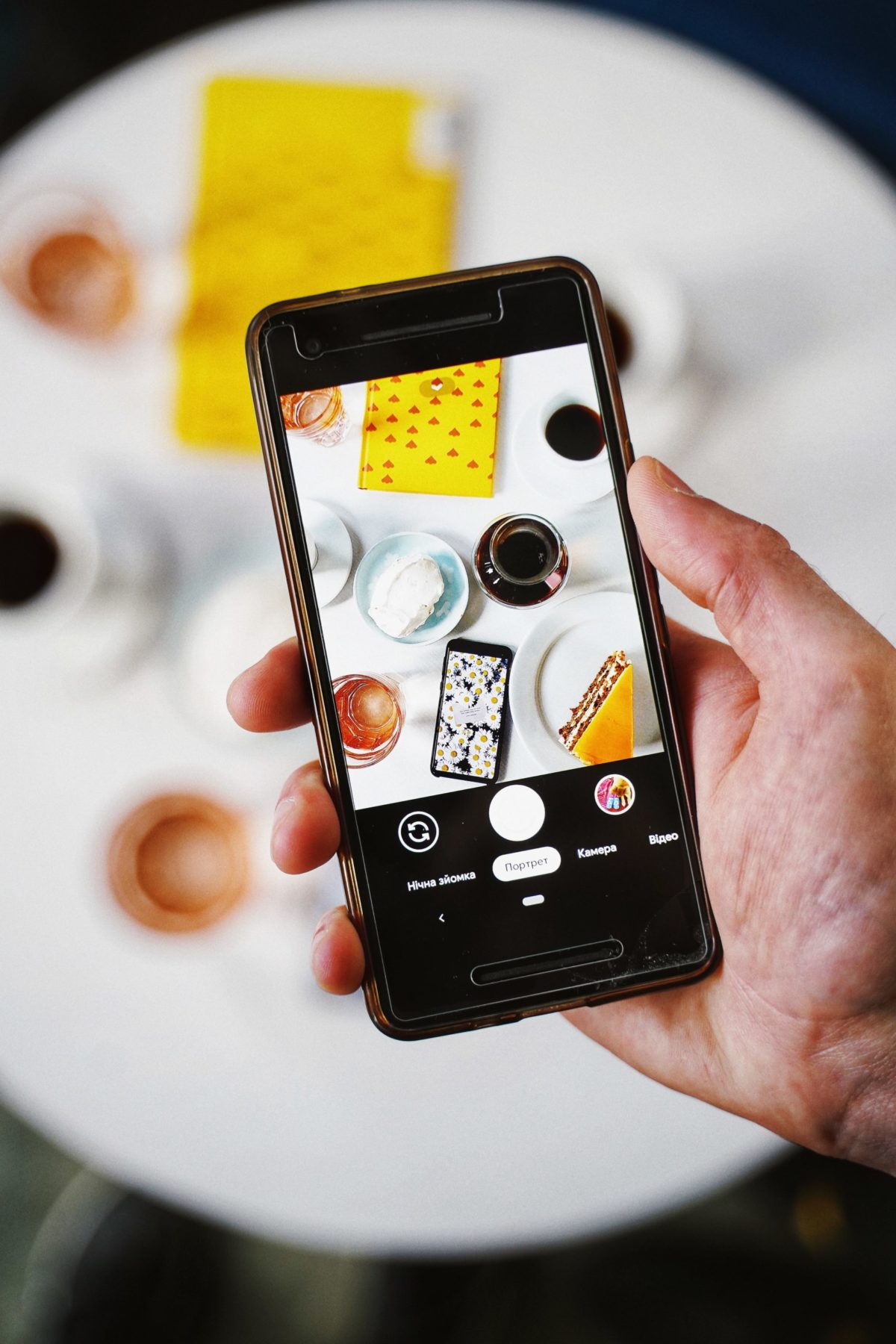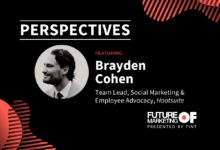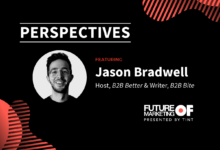It’s predicted the influencer marketing industry will reach $16.4 billion in 2022. That’s a big difference from the $1.7 billion global market size it hit in 2016.
We’ve watched the creator economy mature over the past half-decade, turning from pretty photos of latte art for friends and family to billion-dollar empires. Content creation has hit a new peak and that means there’s a shift in marketing happening.
- People are buying products their favorite online influencers promote.
- They’re looking for testimonials from like-minded peers
- They’re finding out about brands thanks to user-generated content.
What does that mean for the future of content creation?
In this article, we’re looking at the 3 ways content creation will change in the future and the 4 ways brands can adapt to the upcoming shifts.
The Current State of Content Creation
We’re seeing the new wave of influencers hit the scene in 2022. They’re called nano and micro-influencers and they have less than 100,000 followers. Unlike content creators with millions of followers, smaller influencers tend to have more engagement and conversion power with their audience.
Alicia Esposito, VP of Content at Retail TouchPoints explains why these influencers are making such a big splash.
“Micro- and nano-influencers are really interesting because they have a very specific niche or an area of focus. And they have a smaller community, sure, but they’re very engaged. I think that’s partly due to the fact that these influencers are just building their community. They’re not spread as thin; they’re not managing so many different platforms and partnerships. They have time to engage; they have time to respond; they have time to really nurture that community. So I think it’s the time they spend engaging in that relationship with their followers.”
As iOS privacy updates change the access brands have to target audiences, nano and micro-influencers have come in to save the day. Brands can allocate their budget to dozens of influencers, instead of paying Kylie Jenner $720,000 to post about their product and get a better ROI on their ad efforts.
Two million people consider themselves professional creators and their incomes come from social media platforms like Instagram, YouTube, and Twitch. The opportunity to be a full-time creator has never been so widely available as apps like TikTok help niche creators garner new attention.
As content creation continues to become more inclusive, more people will turn their hobbies and passions into side-hustles and full-time gigs. But, the more creators that enter the space—the more competitive it will become. Does this mean the creator economy will hit a point of saturation and marketers will look elsewhere to allocate their ad budgets?
We highly doubt it. Here’s why.
The Future of Content Creation
Our marketing predictions are based on the fact that content creation is following the path currently being paved for the internet. As decentralization builds a new Web3 world, the same expansion is being seen in the creator space. The creator economy started with celebrity-type influencers who used skits and comedy to garner views. These internet stars found their fame on platforms like Vine and moved their audience to Instagram and YouTube as their careers matured. A lot of attention was centralized on a few names.
Today—that’s a lot different. There’s more attention on creators than ever before, and there are more creators. There are creators in more niches than we’ve ever seen, thanks in large part to TikTok’s rise to fame during the pandemic. The creator space has become a much more decentralized space where the power (a.k.a views and attention) has trickled down to people with niche interests and less desire to become an A-list celebrity.
Looking to the future of content creation—this creates our 3 marketing predictions.
#1: Higher Quality Content is on the Rise
Social media platforms like Instagram, TikTok, and YouTube aren’t asleep at the wheel during these changes. They’re doing everything possible to support the creators who bring in their multi-billion dollar annual revenues. We saw Instagram introduce Reels and add more easy-to-use video features (oddly similar to TikTok’s…) to their latest updates. Social media platforms are supporting creators with technology that makes iMovie seem unnecessary and old school.
User-generated content will continue to increase in quality as better editing, more originality, and improved storytelling mature alongside creators.
Using Instagram Reels, FoodsofJane showcases her favorite ingredients with her 190,000+ following. Quick edits explain how to make the same meal and a fun song creates an atmosphere around each recipe. In this Reel, FoodsofJane shares her love of Sazón GOYA spice mix and how she incorporates it into a delicious pasta dish.
Luz Corona, Community Editor at AdWeek, knows that user-generated content is driving brand connection. “UGC gives brands an opportunity to showcase their consumers and connect to their consumers.
User-generated content is created by the consumers of these brands as well, so it’s like them pretty much putting out a silver platter – like this is what I’m interested in and this is what I’m creating. There’s just something about the raw, unpublished component of it that it doesn’t feel highly overly produced. It feels natural. I don’t want to use the authentic word too much, but it is authentic. It’s real. And it’s an opportunity for brands to really drive connection with their consumers.”
#2: Feeds are Getting More Competitive
Will we see a point where Instagram and TikTok turn into dreaded Facebook feeds? Possibly. As more creators publish content and social media platforms take on more daily uploads, we’ll see more and more competition on the feed. The competition will come from creators as well as brands. It’ll become a matter of great strategy to get the attention of social media users as content continues to become more interesting (see above).
The ultimate question will become: how can you make people stop scrolling? You’ll have to interrupt their experience. How can you make it worthwhile?
Brands like Duolingo are bringing in new influencers to garner more attention. Duolingo invited TikTok influencer Chris Olsen to their headquarters to create TikToks. Collaborations like these create scroll-stopping moments that brands will vye for as feeds continue to get more competitive.
Social Media Manager for the World Health Organization Aleksanrda Kuzmanovic knows that creating content based on what’s already working is essential to getting attention in increasingly competitive feeds.
“Quite often, listening to some other accounts or channels is when you get new ideas and see what’s trending. For example, we looked at different accounts that have catchy visuals in terms of simple design, but very strong colors – and it’s something that we started testing on our accounts. And we realized that it actually works way better than having icons and drawings that explain what we are saying – that actually just simple titles with texts with strong colors works. When you scroll through the newsfeed, it’s something that sticks out – you can’t miss it.”
#3: New Jobs are Created
Creators and influencers are a normal part of the marketing world these days. We don’t bat an eye at influencer marketing campaigns with $1 million-plus budgets or free around the world trips in return for brand publicity. These jobs were once brand new, but as they’ve matured it’s created space for a new wave of employment. People are becoming user-generated content creators. UGC creators get paid to create UGC-like content, or faux UGC, for brands.
More brands will rely on faux UGC when they don’t have enough UGC or are looking for a specific style of content.
Instead of brands waiting for customers to create UGC or looking for the right UGC to share across their marketing channels—they’re asking talent to create it for them. Lauren Labeled, a UGC creator agency, creates UGC for brands by connecting UGC creators and companies looking for the perfect content.
The future of content creation supports high-quality user-generated content, predicts competitive feeds, and creates a new type of influencer.
How can brands start implementing these new trends?
How Brands Can Take Action on the Future of Content Creation
Influencers who capitalized on the attention coming to Instagram in early 2014 have businesses bringing in $20 million in annual revenue in 2022. By predicting that followers would want to buy products from their favorite influencers, brands like Monday Swimwear became competitive in niches that were dominated by Fortune 500 companies.
The 3 trends shaping the future of content creation are signaling what brands should do today to see results like Monday Swimwear.
Here are 4 strategies every brand should implement to prepare for the future of marketing.
#1: Learn From Creators
Creators are shaping the future of content. Look at Instagram’s recent prioritization of video content over photos. It came directly after TikTok became a household name and started taking views away from Instagram. Creators decided they liked the authentic nature of TikToks over the professionalism of Instagram. Social media platforms followed suit.
Vivien Garnès, co-CEO and co-founder of Upfluence explained in the Future of Marketing,
“It’s definitely interesting how symbiotic the relationship between the social media platforms on one end and influencers on the other end really is. And it looks like every decision that the platform takes actually factors that into a degree.”
As creators continue to gravitate towards the apps that give them the creative freedom they’re looking for, it’s a brand’s job to learn from them. What are creators doing and why does that align so well with the consumer? How can you create or repurpose aligned content?
Brands collecting and organizing user-generated content are keeping tabs on what people are saying about their products and figuring out how to add customer voices to their marketing channels. Creators making user-generated content for brands are a signal of what type of content brands should repost across their marketing channels. It’s also an opportunity to run experiences and contests that promote more UGC.
Leading brands, like Nike, LinkedIn, and Nestle use TINT’s UGC Studio to store, organize, search, customize, edit and repurpose owned and earned content. Brands stay tapped into creator content through their UGC Studio and keep up with content trends and consumer interests in real-time.
Digital marketing consultant Neal Schaffer realized creators weren’t his competition, they were his allies in content creation.
“Yes, any brand could set up a content studio and create content better than any influencer out there and build up a bigger community than any influencer, but they didn’t because they can’t – they’re not people. They are driven by different objectives and motives.
And that’s the whole point: why try to compete? Because every time you post your own content in the feed, you’re competing with influencers for the same community. Why try to compete with people that are doing it better than you? Why wouldn’t you want to work together with them? And I think that’s really the main message here.”
#2: Pay Attention to Platform Changes
If there’s one promise in marketing, it’s the promise of upcoming platform changes. Instagram introduced Reels as 15-second clips. They’ve already increased the length of Reels to 60 seconds. Twitter tried out Story-type content for a few months. They recently decided to terminate the feature. YouTube is pushing vertical videos, called Shorts, on user feeds instead of only long-form videos.
Platforms are changing and it’s a brand’s responsibility to keep up. As platforms continue to change, we know creators are the signal of what is and isn’t working. By staying up-to-date with platform changes and watching how creators adapt and optimize their content brands can learn what they need to get views and engagement.
Being one of the first to take part in a new feature or platform can propel impressions, followers, and engagement online. TikTok creators capitalizing on the social platform’s willingness to show their content to new audiences had their lives changed in a matter of months as they rose to A-list stardom. The brands that jumped on the wagon realized they could experience heightened reach and impressions, too.
The NBA grew its TikTok audience to 15.3 million followers in a few years. They’ve amassed 230.7 million likes and their short-form videos see 100,000+ views regularly. They’ve paid attention to the platform changes (from TV to social platforms) and use TikTok to share their biggest game highlights and player updates. The NBA saw where creators were going—and they’re reaping the benefits.
#3: Build Relationships with Fans and Creators
In our 2022 State of User-Generated Content Report, we found that 60% of consumers surveyed wish more brands would tell their fans and customers what type of content they want them to create. People are more interested in building relationships with brands than ever before. Nano and micro-influencers want brands to repost their content on brand marketing channels.
People want to be part of their favorite brand’s ecosystems. This trend is moving fans and creators to have a larger stake in brands than we’ve ever seen before. Coupled with the technology building Web3 and the metaverse, we’re seeing a shift in how people interact with their favorite brands. Instead of just buying a product and creating UGC about it—people are buying into brands and products through NFTs and promoting the experience of being part of the brand’s ecosystem.
Gary Vee has turned his personal brand as a marketing influencer into a $100 million NFT project. His fans and other creators buy VeeFriends and get to be more than happy customers. They become part of the VeeFriend experience, experiencing exclusive access to VeeCon and having the option to sell their tickets for profit if they choose to in the future.
Brands building relationships with their fans and the creators making UGC for them are one step ahead already. Instead of looking for quick deals and one-off promotions, brands need to prioritize long-term relationships. These are the relationships that turn social media content into a $100 million community (this applies even if you’re not ready to enter the metaverse just yet).
#4: Prioritize Authentic UGC
There’s nothing that can replicate a real and genuine testimonial about your products and services. Even with UGC creators happy to make faux UGC, brands have to continue to prioritize real UGC. This is the user-generated content that comes from happy customers looking to share their experiences.
This should always be the goal. Get people to love your brand so much, they need to tell the world about it. Regardless of which social platforms are the most popular, this brand relationship creates reliable marketing channels that get an ROI. When people feel excited, comfortable, and creative about making content for your brand—you won’t have to worry about what type of content is trending and which platform is best to focus on.
Creators and customers will do that research for you. They’ll create UGC on the channels they enjoy the most and will bring your brand with them for the ride. As a brand, it’s your focus to ensure your fanbase and community have the resources they need to create authentic UGC. This comes from showing them what you’d love to see by reposting aligned UGC or holding contests with clear entry rules.
With TINT’s Experience Builder, you can create contests that garner tens of thousands of UGC photos and videos. Katherine Stephen, Canon’s European Marketing Planner, shares the team’s strategy behind their UGC contest that brought in 2,000+ pieces of UGC.
“When developing the contest, we wanted to engage a younger generation of storytellers that mainly used their phones to share their stories on social platforms. It was an opportunity to introduce them to Canon’s brand and inspire them on how they can elevate their storytelling with Canon products.”
What’s The Next Biggest Trend in Content Creation?
Content creation is changing—and it always has been. We’ve seen the creator economy mature over the past few years and are realizing that this is just the beginning. The creator economy has hardly scraped the surface of what it’s capable of as it continues to amass more creators in smaller and smaller (and just as profitable) niches.
The changes we’re seeing today make it clear that higher quality content, more competition, and new jobs are all happening as we speak. Brands can either take action based on the current state of content creation or wonder why they didn’t go for it later.
Thankfully, these predictions can be made with confidence. There’s a lot to learn from creators and just by observation we can see where they’re taking the next leg of the creator economy. As the creator economy continues to mature and show us what’s next—it’s crucial to stay up-to-date with the latest.
Join the 40,000+ marketers reading the Future of Marketing every week and stay in the know on the latest marketing news and strategies.





